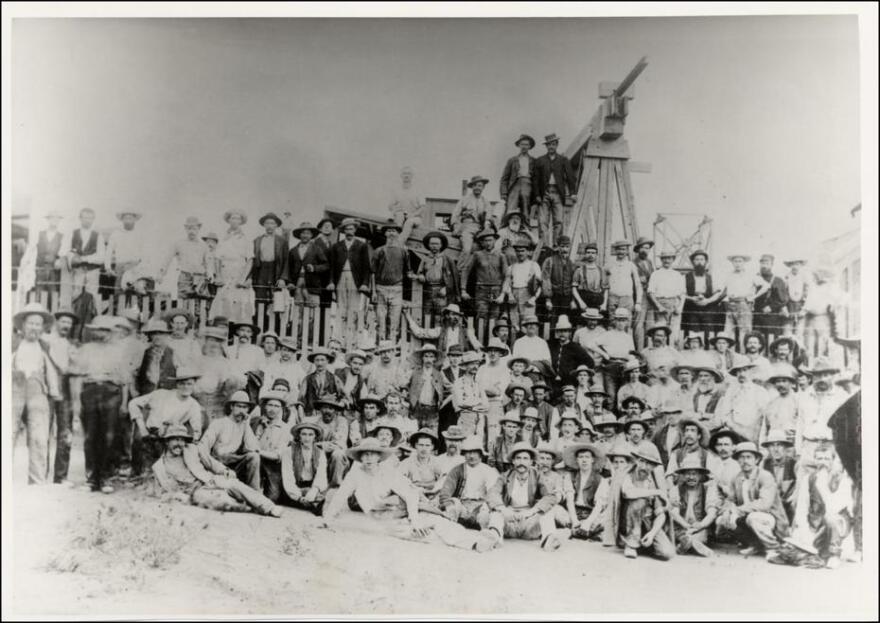This week marks the 127th anniversary of the Texas State Capitol’s dedication. Well, not necessarily. May 14 marked the completion of the Capitol, along with a week-long celebration to dedicate it, but the state didn’t accept Pomeranian builder Gustav Wilke’s granite-domed monument to Texas because of structural issues — chiefly, the copper roof leaked.
The building was officially dedicated seven months later, but Wilke’s architectural prowess wasn’t blamed for the building’s initial shoddiness — he would later go on to build some of the world’s first skyscrapers. Ultimately, the capitol building’s inconsistencies, exacerbated by a Chicago-based syndicate bankrolling Wilke’s operation, a years-long labor strike and a handful Texas convicts and Scottish strike-busters, contributed to the project’s hamstringing.
The Syndicate
The new Capitol project was approved by lawmakers in 1879 and was hastened after the state’s original building caught fire in 1881. Of the two plans submitted to revamp the Capitol, the state contracted Mattheas Schnell of Illinois for the gig in 1882. Twelve days later, Schnell transferred the project, which included a payment of more than three million acres of land in Texas, over to what the Southwestern Historical Quarterly called “the syndicate,” a company run by U.S. Senator Charles B. Farwell, his brother John Farwell and U.S. Rep. Abner Taylor, all from Illinois.
Taylor, the project head, requested the state acquire more limestone, the building’s initial component, from Illinois, as Texas’ supplies were thin. The state balked, as the Capitol was meant to be built with native materials. So it was decided the project would use red granite from Marble Falls, which tacked on an extra $613,865 to the budget.
To keep labor costs low, the state allowed Wilke to employ up to 500 convicts. Wilke was then subcontracted to oversee the project.
Convicts, Scottish Scabs and Cutters
Despite protests from Texans over using prison labor, Wilke continued the use of convicts on the Capitol project. The Austin chapter of the Granite Cutters of America said both Wilke and the syndicate “care for nothing but the almighty dollar and now seek to degrade our trade and fill their own pockets.” This was in response to Wilke’s proposal to pay granite cutters $3 a day, a dollar below the union’s wage.

The project was boycotted by granite cutters nationally.
In April 1885 Wilke sent an associate to Aberdeen, Scotland — a town renowned for its granite cutters. More than 120 granite cutters and blacksmiths were recruited and were promised 18 months of labor, with wages ranging from $4 to $6 a day.
When 88 Scots arrived in New York City, Wilke’s agent George Berry failed to tell them that their work on the Capitol wasn’t legal, as it violated the Alien Contract Labor Law. Members of the Granite Cutters’ Union convinced 24 of them to abandon the work upon their arrival.
The remaining 64 began a seven-day journey to begin work at Marble Falls.
Holding the Bag
Wilke continued recruiting Scots, and by 1886 the Capitol’s walls, ornamental work and dome were nearing completion, but by May of 1887 only 15 of the Scots remained.
At least three had died and the others grew tired of less-than-promised wages — it’s estimated that the workers made less than a dollar a day. Some of those that left provided their contracts to the Cutters’ Union, which used them as evidence in a prosecution of the syndicate and Wilke, all of whom were indicted in July 1886.
Wilke swallowed the charges, admitting to violating the labor law and accepting a fine of $1,000 per worker for a total penalty of $64,000. The fine was eventually appealed and lowered to $8,000, along with a $500 fee to the Cutters’ Union.
When the project finished in May of 1888, it finished $520,000 under-budget. Of course, it showed. The dome, which was the final stage of construction, wasn’t up to standards, and it took another eight months to officially dedicate the now-iconic dome.




